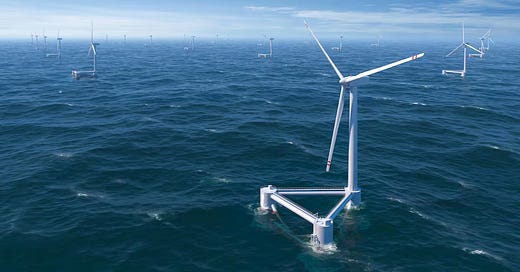As always, California has come up with imaginative solutions to national and even global problems. For example, in energy systems planning, how should one deal with the Trump Administration’s outright hostility to wind turbines, particularly offshore wind turbines? And how to consider the new cost burdens imposed by tariffs? The increasing hostility of Canadians towards extending power exports? Tighter power import levels from neighboring states, given the acceleration in demand from their data centers?
Reading the California Public Utility Commission’s February 20 documents transmitting the state’s Transmission Planning Process to CAISO, the state’s independent grid operator, it’s clear the “Cappuccino” has the universal answer: Ignore All That.
According to the CPUC’s Integrated Resource Plan, it’s full steam ahead on preparations for three rounds of solicitations of bids for between 4.5 GW and 7.6 GW of floating offshore wind resources, starting in 2027. The current peak capacity of the California system is about 42 GW, so this is a big bet on reducing California’s fossil fuel use.
Oh, and the IRP refers to California’s leveraging “federal resources” that to the conventional eye have disappeared into the DOGE woodchipper. As the current Secretary of Energy wrote two years ago, “There is no climate crisis and we’re not in the midst of an energy transition.”
You don’t have to like the Trump Administration to recognize that “offshore” means they control the outcome for the next four years. They’re the ones with the Bureau of Ocean Energy Management, the Coast Guard, and the Navy. No federal buy-in, no new offshore projects.
So, until 2029, at the very earliest, no federal resources, no permits, no giant companies preparing competitive bids at their own expense, no nothing. As no final designs for California’s offshore wind turbines have been completed and approved, the development and engineering work would be borne by the state government’s contractors or its energy ratepayers.






